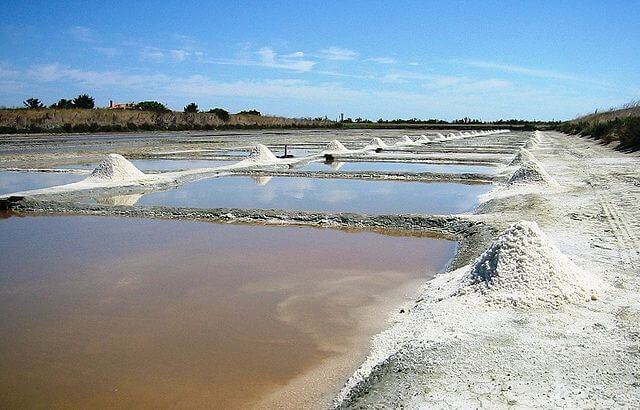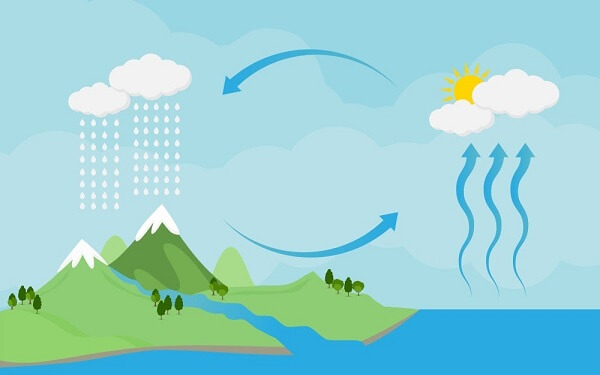Evaporation DefinitionEvaporation is a common and essential phenomenon that occurs in our daily lives. It is a physical process in which a liquid changes into a gaseous state. The heat supplies the energy required for Evaporation from the surrounding environment, and the process occurs until the liquid reaches a state of equilibrium with its vapor. This article will explore Evaporation in detail and discuss its key features, mechanisms, and applications. Evaporation DefinitionAs discussed in the introduction, Evaporation is a physical process in which a liquid changes into a gaseous state. It occurs when the particles of a liquid absorb enough energy to overcome the forces of attraction holding them together and become dispersed into the air as individual gas molecules. The temperature at which this process occurs is known as the boiling point and depends on the pressure and the specific substance being evaporated. For Evaporation to occur, the liquid must be exposed to sufficient energy, typically heat. This heat causes the liquid molecules to become more energetic and move faster, eventually breaking free from the surface of the liquid and becoming vapor. As the vapor rises and mixes with the air, it spreads and cools down, eventually condensing back into a liquid state. History of EvaporationThe history of Evaporation as a scientific concept can be traced back to ancient civilizations, where people observed and documented the liquid-to-gas transformation process. The ancient Greeks, for example, recognized that Evaporation played a role in the water cycle and described it as a key component of the natural world. In the 17th and 18th centuries, scientists began to study Evaporation more systematically and developed the first quantitative models to describe the process. For example, French chemist Antoine Lavoisier studied Evaporation and developed a "conserved mass," in which the total mass of a system remains constant during physical and chemical processes. In the 19th and 20th centuries, advances in physics and chemistry allowed scientists to better understand the underlying mechanisms of Evaporation and develop new technologies that use the process. For example, the development of refrigeration and air conditioning systems revolutionized how we control temperature and created new possibilities for industrial and household use. A few areas where Evaporation is Used
Evaporation occurs naturally in everyday life, for example, the Evaporation of water from a puddle on a hot day, sweat from the skin, and alcohol from an open bottle of wine. Evaporation is also an important industrial process, with water treatment, refrigeration, and chemical manufacturing applications. 1. In treatment industry In the water treatment industry, Evaporation separates salt and other minerals from seawater or brackish water. By heating the water, the water vaporizes and leaves the minerals behind, allowing the purified water to be collected. 2. In refrigeration In refrigeration, Evaporation is used as a cooling mechanism, as the Evaporation of a liquid, such as a refrigerant, absorbs heat from the surrounding environment. 3. In distillation Evaporation is also used in distillation, which separates liquids based on their boiling points. A combination of liquids is heated to the boiling point during distillation, and the resulting vapor is then condensed and collected. The different components of the mix have other boiling points and will evaporate at different temperatures, allowing for separation based on their boiling points. This process produces alcoholic beverages, essential oils, and many other products. 4. In the water cycle In addition to its industrial applications, Evaporation is an important natural process that plays a significant role in the water cycle. Evaporation occurs when water from lakes, rivers, and oceans is heated by the sun and transformed into water vapor, which rises into the atmosphere. The water vapor then condenses to form clouds, and eventually, precipitation occurs, resulting in the return of water to the earth. The water cycle is a crucial process that maintains the water balance on earth and is essential for life as we know it. 5. In chemical manufacturing In chemical manufacturing, Evaporation concentrates and purifies chemicals and separates different mixture components. 6. In Desalination Evaporation is used in desalination plants to convert saltwater into fresh water. The process works by evaporating saltwater to produce pure water vapor, which is then condensed to produce fresh water. 7. Humidification Evaporation is used in humidifiers to increase a room's humidity. This is especially important in dry climates or during winter months when indoor air can become very dry. Overall, Evaporation is widely used in many industries and household applications due to its ability to remove heat, reduce liquids, and concentrate materials. A few factors on which Evaporation depends 
The evaporation rate depends on several factors, including the temperature, the humidity of the surrounding air, the surface area of the liquid, and the wind speed. As the temperature increases, the evaporation rate increases, as more energy is available to convert the liquid into a gas. Similarly, as the humidity of the surrounding air decreases, Evaporation increases, as there is less water vapor in the air to compete for the energy needed for Evaporation. The surface area of the liquid and the wind speed also affect the evaporation rate, as a larger surface area and higher wind speed provide more opportunities for the liquid to come into contact with the air and evaporate. Features of EvaporationEvaporation is the process by which a liquid turns into a gas. As discussed earlier, it is a fundamental aspect of the water cycle and important in many natural and industrial processes. Here are some key features of Evaporation: 1. Temperature Dependence Evaporation is a temperature-dependent process and occurs more rapidly at higher temperatures. This is because the heat provides the energy required for the liquid to change into a gas in the surrounding environment. 2. Humidity The surrounding environment's relative humidity has an impact on Evaporation as well. In a dry climate, Evaporation occurs more readily, as the air can absorb more water vapor. Evaporation is slower in a humid environment because the air is already saturated with water vapor. 3. Surface Area The liquid's surface area also impacts the rate of Evaporation. A larger surface area increases the evaporation rate, as there is more space for the liquid to turn into a gas. 4. Wind Speed Wind speed can also impact the evaporation rate. Faster winds can increase Evaporation, as they help carry the water vapor away from the liquid surface. 5. Latent Heat of Vaporization The latent heat of Evaporation, a sort of energy input, is needed for Evaporation. Depending on the liquid's properties, this energy is required to turn one liquid unit into one gas unit. 6. Particulates The presence of particulates in the liquid can affect the evaporation rate, and Particulates can reduce the liquid's surface area and slow the evaporation rate. 7. Pressure Environmental pressure can also impact the rate of Evaporation. The vapor pressure required for Evaporation is higher at higher pressures, and the evaporation rate is slower. The mechanism of EvaporationThe mechanism of Evaporation involves the conversion of a liquid into a gas and can be described at the molecular level as follows:
ConclusionIn conclusion, Evaporation is a crucial process in nature and various industries. Understanding the factors influencing the evaporation rate is important for optimizing processes in these industries and understanding the natural world around us.
Next TopicHome Definition
|
 For Videos Join Our Youtube Channel: Join Now
For Videos Join Our Youtube Channel: Join Now
Feedback
- Send your Feedback to [email protected]
Help Others, Please Share









